Skull and Bones Review: Ubisoft’s Voyage into High Seas Piracy
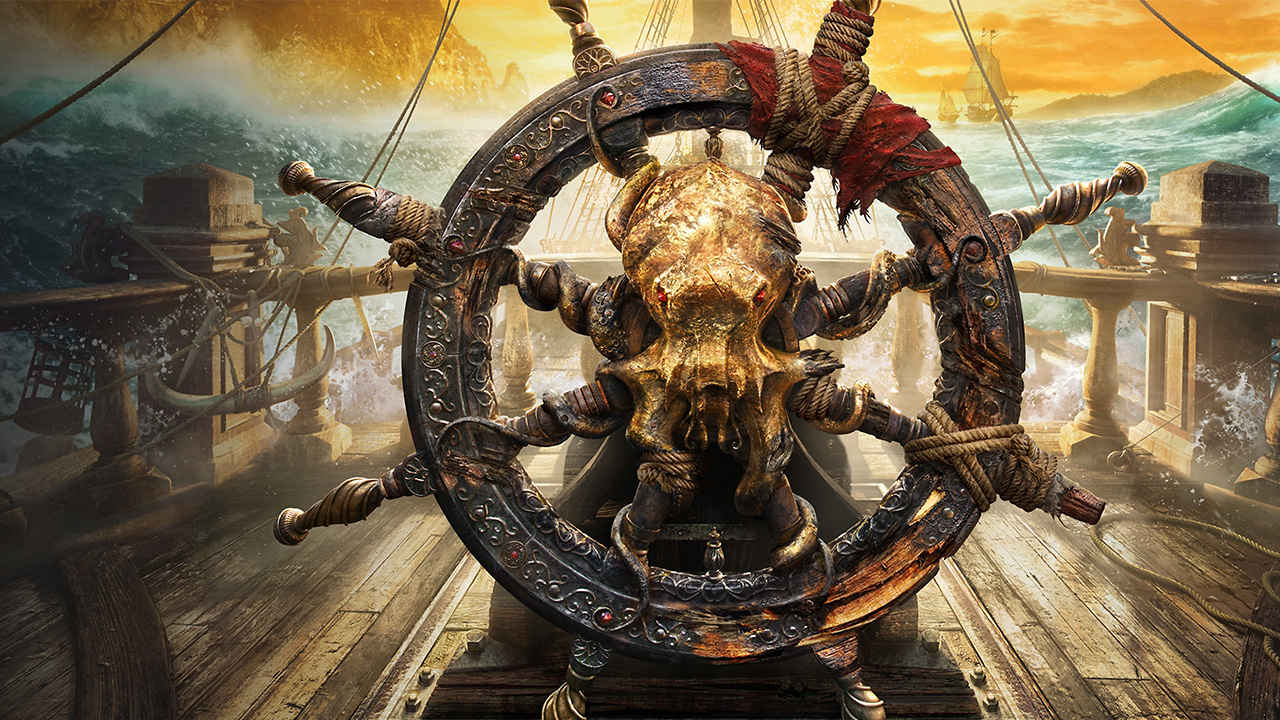
Ubisoft’s Skull and Bones has long been a topic of interest, not only because of its ambitious theme of high-seas piracy but also due to its turbulent development journey. Originally conceived as a naval combat expansion for Assassin’s Creed IV: Black Flag, the project eventually morphed into a full-fledged multiplayer pirate adventure, taking several years to reach the public. The game promises players an experience of being a notorious pirate, conquering the seas, looting ships, and crafting a personal pirate legend. However, with such high expectations, does it manage to deliver the ultimate pirate fantasy, or does it sink under the weight of its ambition?
Setting the Scene: A Pirate’s Life for Me
The core of Skull and Bones revolves around the Golden Age of Piracy in the Indian Ocean, one of the most lawless, diverse, and chaotic maritime regions in history. The game’s world is a visually impressive open-ocean landscape filled with exotic islands, dangerous seas, and bustling ports. Players take on the role of a pirate captain navigating this lawless world, where survival hinges on the crew’s loyalty, ship management, and mastering naval warfare.
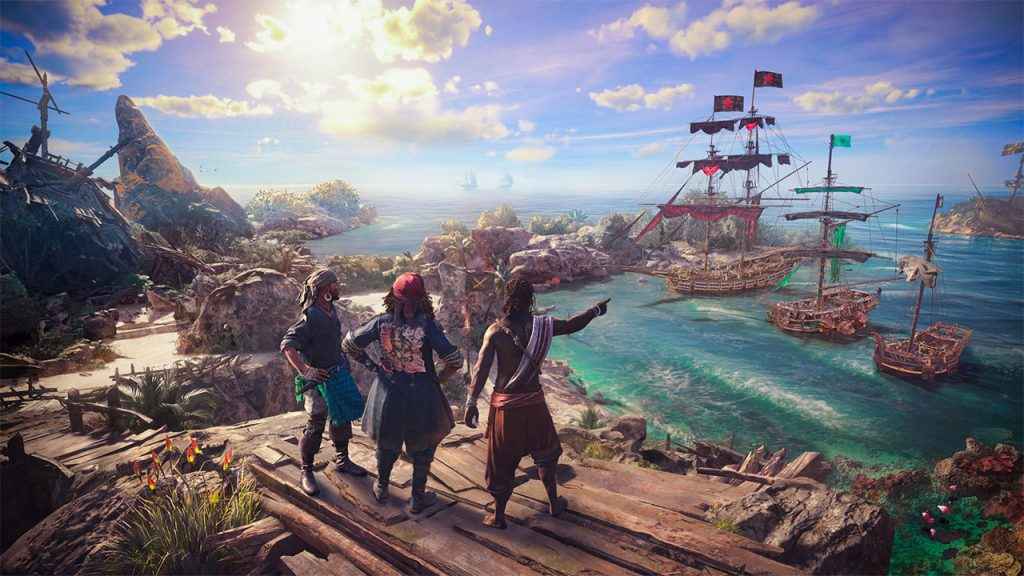
From the outset, Skull and Bones establishes an immersive atmosphere, with detailed ship designs, tropical vistas, and stormy seas adding to the sense of adventure. Ubisoft’s talent for world-building is on full display here, with a vibrant ecosystem where islands teem with unique flora and oceanic life thrives beneath the surface. Sharks ahoy! From raging storms to the subtle creaking of wooden ships, the attention to detail is impressive. The soundtrack also complements the setting, delivering a rich, sea-shanty-infused score that fits the period and setting perfectly.
Gameplay Mechanics: Naval Combat at Its Core
The heart of Skull and Bones is its naval combat, where players control various classes of ships, each with distinct strengths and weaknesses. Combat is heavily inspired by Black Flag’s naval engagements, but Ubisoft has expanded the mechanics to offer more strategic depth and customization. Players can upgrade and outfit their ships with different cannons, mortars, and explosive barrels to suit their play-style. Whether you prefer swift and nimble vessels or heavy, tank-like warships, there’s a ship for every type of pirate. That being said, you can’t leave the wheel and go about exploring your ship nor can you make use of the parkour system and climb up masts or rigging ropes on your ship. Some ships do look alike such as the Brigantine, a medium-sized vessel, looks exactly like the Jackdaw from Black Flag albeit with a higher level of detail and a much bigger crew complement. But then again, the ships from that era did have a common design.
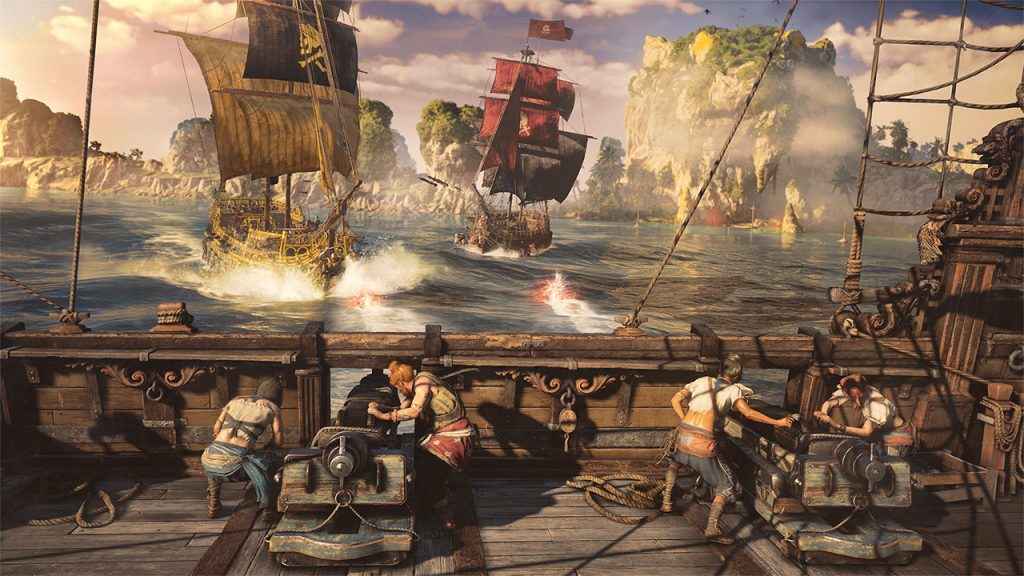
The tactical nature of naval warfare becomes evident as you engage enemy ships, forts, and sea monsters. Positioning is key, as players must manage their sails, wind direction, and ammunition. Battles can quickly turn into chaotic firefights, with cannonballs flying, boarding parties attempting to commandeer vessels, and environmental hazards such as reefs and storms playing a role. The gameplay’s complexity is enriched by the need to manage your ship’s crew, ammunition, and resources, as running low can leave you vulnerable.
We played through a lot of the Season 1 content and we can tell you that the difficulty scaling is a tad off and you’ll end up requiring help from other players to get out of tight spots when pirate hunters of enemy faction Tier 5 ships pop up in the narrow channels within landmasses.
Progression and Customisation: From Pirate to Kingpin
Skull and Bones integrates a progression system that revolves around reputation, wealth, and ship upgrades. Starting as a fledgling pirate captain with a basic sloop, players must amass wealth, recruit a loyal crew, and upgrade their ship to climb the pirate hierarchy. The game features a robust crafting system, allowing players to gather resources from sunken ships, trade ports, and island outposts to build new weapons, armours, and ship upgrades.
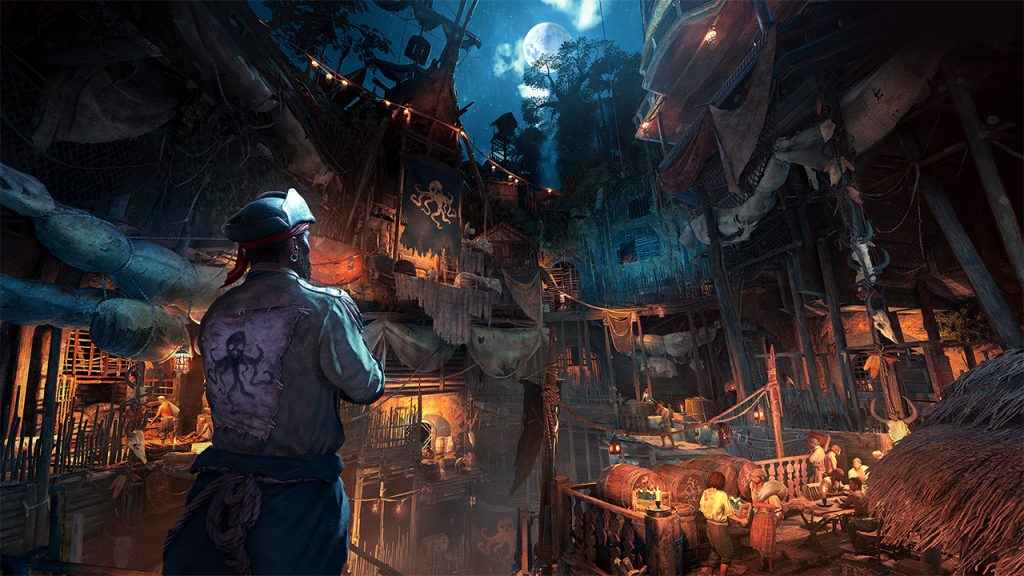
Customisation is another significant aspect of the game. From cosmetic changes such as sails, figureheads, and hull designs to gameplay-affecting modifications like reinforced hulls or specialised cannons, there’s plenty of room for personal expression. This helps players feel a sense of ownership over their pirate persona and ship, a crucial element in a game where your vessel serves as both your home and primary means of interaction with the world.
However, one notable drawback is the grind associated with progressing. Resources are scarce, and upgrading your ship often requires significant investment, both in terms of time and materials. While this adds realism to the pirate experience, it can also lead to repetitive gameplay loops that feel more like busywork than adventure. After several hours of play, it can start to feel like you’re simply running from one resource point to another rather than engaging in exciting, unpredictable pirate escapades.
Multiplayer Focus: Sailing with Friends (or Foes)
Skull and Bones is primarily a multiplayer experience, where players can form pirate crews, raid enemy ships, and engage in large-scale sea battles with rival players. The game supports both cooperative and competitive play, meaning you can team up with friends to hunt down high-value targets or engage in PvP skirmishes where your ship’s spoils are on the line. Ubisoft has integrated a shared world experience, where players can encounter each other organically while sailing the seas, creating both opportunities for collaboration and danger.
The multiplayer mode shines when players team up to tackle large-scale objectives, such as raiding fortified island outposts or taking down powerful enemy warships. There’s a sense of camaraderie when coordinating with your crew, adjusting sails, firing cannons, and boarding enemy ships for loot. However, the downside is that solo play can feel isolating and difficult, especially when you’re outmatched by larger, better-equipped crews. The game’s balancing doesn’t always favour solo pirates, often pushing players towards joining groups to survive.
Another issue lies in the game’s PvP mechanics, which can be unforgiving to newer players. Being attacked by higher-level players who’ve already amassed better ships and gear can lead to frustration, particularly if you’re just starting out. While Ubisoft has implemented some balancing measures, it doesn’t entirely mitigate the difficulty spike new players may face in open-world PvP.
Quests and World Events: Shaping Your Legend
Beyond naval combat and looting, Skull and Bones offers a variety of quests and world events to keep players engaged. These range from simple fetch quests to more elaborate missions that involve storming fortresses, rescuing kidnapped sailors, or tracking down legendary pirate bounties. The game also introduces dynamic world events, such as naval blockades, pirate mutinies, and treasure hunts, which encourage players to explore the open seas.
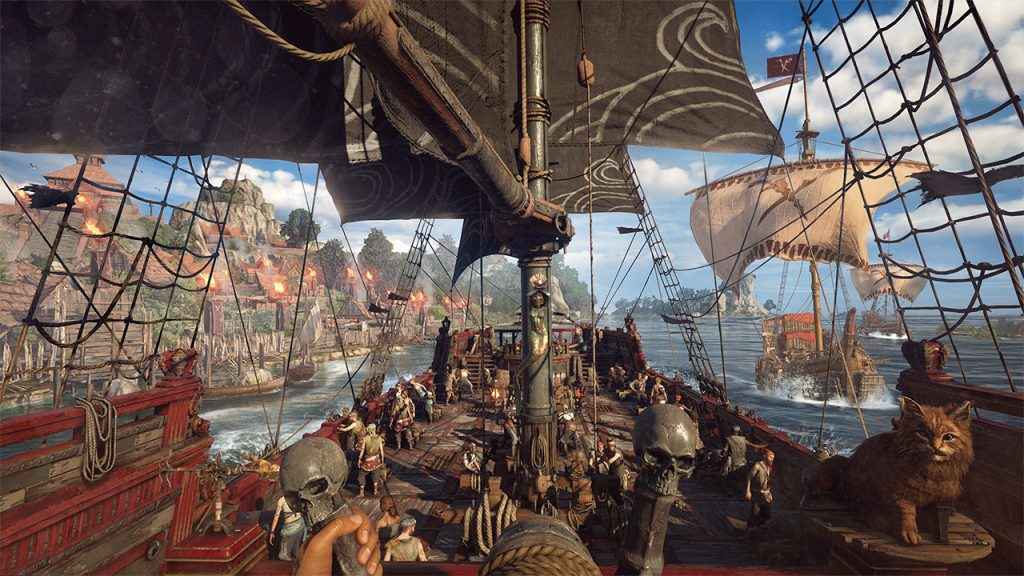
While the variety is there, the mission structure can sometimes feel formulaic, with many objectives boiling down to “sail here, fight this, collect that.” The potential for deeper storytelling and more intricate quest design is somewhat underutilised, with many missions feeling like padding rather than meaningful content. That being said, the game’s world events can create exciting emergent gameplay moments, where the actions of other players affect your decisions. For instance, encountering another player’s crew during a treasure hunt can lead to unexpected alliances or hostile engagements, injecting unpredictability into the experience.
The Ship vs. The Pirate: A Missing Component
One of the most noticeable aspects of Skull and Bones is its heavy focus on ship combat and management, often at the expense of personal, on-foot pirate interactions. While players can explore ports and interact with NPCs on islands, the lack of meaningful land-based combat or exploration feels like a missed opportunity. Unlike Assassin’s Creed: Black Flag, where players could seamlessly transition between ship battles and swashbuckling sword fights, Skull and Bones limits much of the action to your ship.
This can make the game feel one-dimensional at times. There’s no real ability to explore islands, engage in swordplay, or search for treasure on foot, which are core elements of the pirate fantasy. While the ship combat is well-executed, the lack of variety in gameplay experiences may leave players wishing for a more complete pirate adventure that extends beyond the deck of their ship.
Visuals and Performance: A Visual Feast with Choppy Waters
Ubisoft has long been known for delivering visually stunning games, and Skull and Bones is no exception. The Indian Ocean setting provides a rich backdrop, with sun-drenched islands, crystal-clear waters, and towering storms. The ocean itself is a standout, with realistic wave physics, dynamic weather patterns, and shifting light conditions that add to the immersion. The ships are meticulously detailed, with sails that flutter in the wind and cannons that roar with satisfying force.
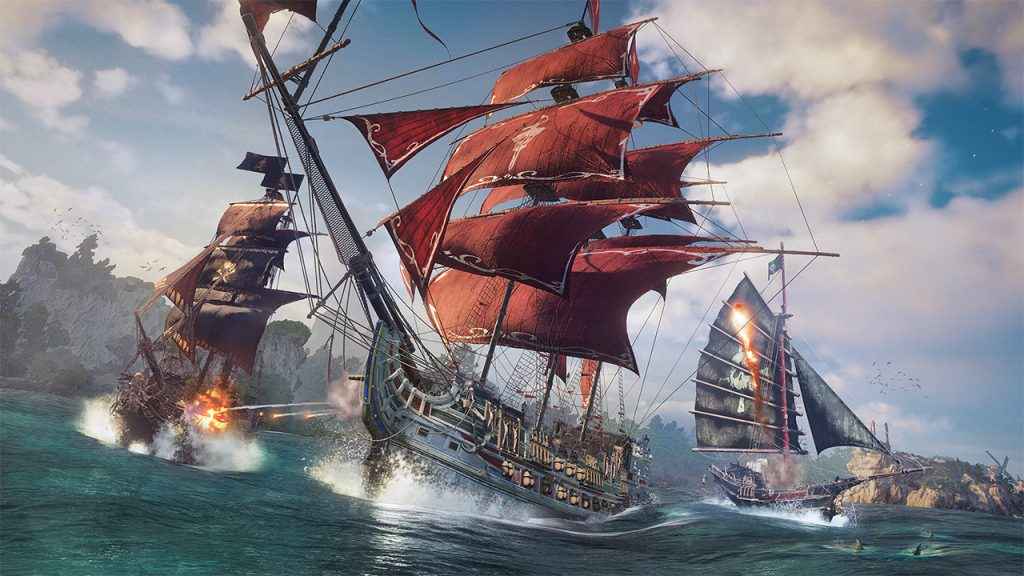
Performance-wise, Skull and Bones can be hit or miss. While the game runs smoothly on high-end PCs and next-gen consoles, some players have reported frame rate drops and stuttering during intense naval battles, particularly in multiplayer sessions. Additionally, load times when travelling between ports or engaging in world events can be lengthy, breaking immersion. We played the game on an RTX 3080 coupled with 32 GB of RAM and an AMD Ryzen 9 7000 series processor. We managed to get around 68-72 FPS on 4K with all the bells and whistles turned on along with DLSS 3.5. At 1440p, this number would ramp up to 106-110 FPS. So, we wouldn’t call the game well-optimised but it isn’t in any way badly optimised either.
Sound Design and Voice Acting: Immersive but Limited
The sound design in Skull and Bones is another high point, particularly during naval battles. The creak of wood under pressure, the splash of waves against the hull, and the deafening roar of cannons create an immersive soundscape that pulls you into the pirate world. The musical score, featuring period-appropriate sea shanties and orchestral arrangements, enhances the overall atmosphere, particularly during exploration and combat.
However, the voice acting is somewhat inconsistent. While NPCs in ports and some crew members are well-voiced, others can sound wooden or lack character depth. This is especially noticeable during quest dialogues, where some of the performances feel phoned in, detracting from the game’s narrative impact.
Skull and Bones – Verdict
Skull and Bones is an ambitious game that nails many aspects of the pirate fantasy but stumbles in others. Its naval combat is undoubtedly the highlight, offering deep, tactical gameplay that’s satisfying and visually impressive. The world is beautifully crafted, and the sense of scale and adventure is palpable. However, the game’s reliance on ship-based mechanics can lead to a sense of monotony, particularly for players looking for a more varied pirate experience that includes on-foot exploration and combat.
The multiplayer focus can be both a blessing and a curse, depending on how you prefer to play. Teaming up with friends for large-scale battles is thrilling, but solo players may find the game’s PvP aspects punishing and the grind for progression tedious.
Ultimately, Skull and Bones feels like a game caught between two worlds. It excels in naval warfare and open-world exploration but lacks the variety and depth needed to fully realise its potential as a pirate simulator. For those seeking a focused, ship-based multiplayer experience with beautiful visuals and strategic combat, Skull and Bones will certainly scratch the itch. However, for those looking for a more complete pirate fantasy—one that includes duelling on beaches, exploring ancient ruins, and searching for buried treasure on foot—this title may leave something to be desired. Personally, the more we played the game, the most we felt like seeing it all through to the end.
Mithun Mohandas
Mithun Mohandas is an Indian technology journalist with 10 years of experience covering consumer technology. He is currently employed at Digit in the capacity of a Managing Editor. Mithun has a background in Computer Engineering and was an active member of the IEEE during his college days. He has a penchant for digging deep into unravelling what makes a device tick. If there's a transistor in it, Mithun's probably going to rip it apart till he finds it. At Digit, he covers processors, graphics cards, storage media, displays and networking devices aside from anything developer related. As an avid PC gamer, he prefers RTS and FPS titles, and can be quite competitive in a race to the finish line. He only gets consoles for the exclusives. He can be seen playing Valorant, World of Tanks, HITMAN and the occasional Age of Empires or being the voice behind hundreds of Digit videos. View Full Profile




